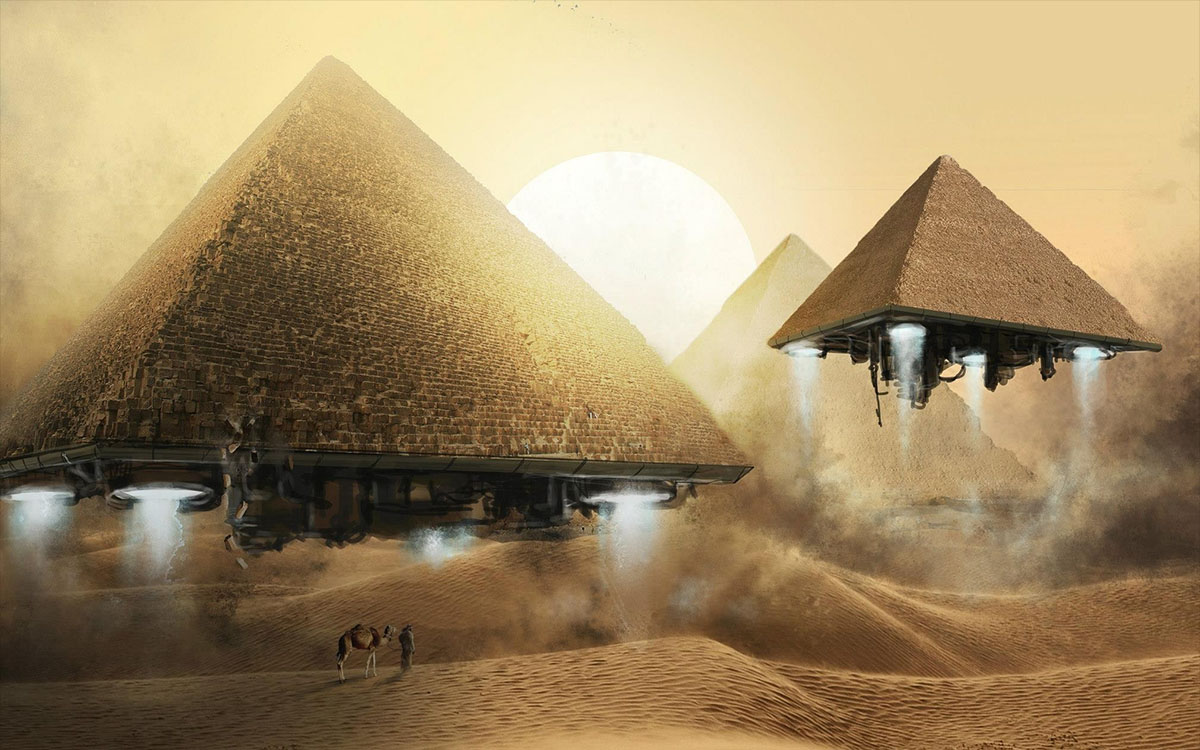separating ancient history from ancient fiction

Now, I’ve written a great deal about the ancient astronaut hypothesis, the idea that alien beings had profound influence on our evolution and civilization. Usually, when I did, I talked about a lack of a smoking gun for extraterrestrial meddling in our genome or our politics, and pointed out just how rare it would be for an advanced alien species with a passion for exploration to evolve close to the same time period as us, detect our planet, cross light years to get here, and have interest in doing anything on Earth to cover the scientific basics. But what about another line of evidence from ancient astronaut believers? According to them pictures of weird beings and stories of all sorts of bizarre creatures, monsters, and mysterious chariots in the sky must point to visitations, an assertion countered by skeptics with alternative explanations that usually have to do with the religious art commonly produced by the civilizations in question or pointing out the believers’ all too tenuous grasp of the historical facts and games of confirmation bias.
However, there’s another idea that seems to be missing. Our ancestors wrote fiction and were every bit as creative as we are. In fact, we have records of jokes that date to nearly 4,000 years ago and epic sagas that are more than a thousand years old. Fun fact, the oldest known joke in human history is a fart joke. The second? A joke about women wearing nothing but fishnets for the visual benefit of a pharaoh. The oldest European joke? A bait and switch riddle that seemed to be describing a penis. Yes, humanity hasn’t changed all that much when it comes to humor, I know. And that’s precisely the point. We shouldn’t take everything we see from the past literally like ancient astronaut believers, although we sometimes do. The legend of King Arthur written in Perceval has inspired many true believers today to argue that there’s a real Holy Grail, just see the book on which the DaVinci Code was based: Holy Blood, Hold Grail. Despite being written as an epic fictional tale with colorful characters and fictional creatures, people take parts of it to be factual or based on fact simply because they mention other mostly or semi-fictional works.
So when an ancient astronaut theorist invokes ancient texts, why not ask how he or she knows if the text was meant to be taken seriously? Were the flying creatures on flaming chariots part of a religious tract meant to guide worshipers of ancient gods or was it entertaining fiction for those who ruled our first empires? How many of the soap operas meant to describe the life of the gods in ancient mythology was canon and how much were creative add-ons? When we read ancient texts on religious matters, are we confusing their versions of Bibles with their versions of the Left Behind books? We know our ancestors were creative enough to dream up gods and monsters, and mastermind engineering projects that would take decades to complete. We know there were great epics with highly fictionalized tales of past wars and natural disasters, and we know there were countless books lost as ancient libraries were burnt down by illiterate conquerors or rabid zealots. So why do ancient astronaut theorists insist on treating every artifact from the past as a record of a historical fact rather than even pretend to allow for works for art and fiction?





